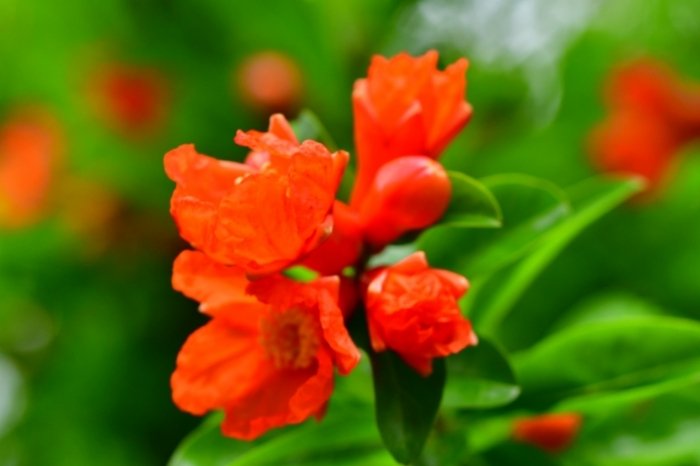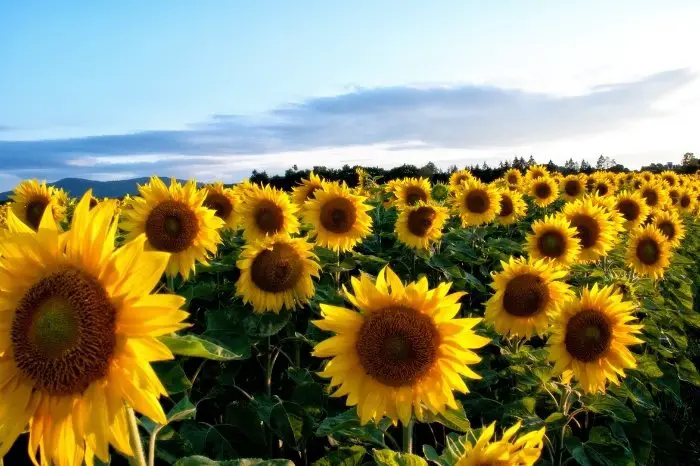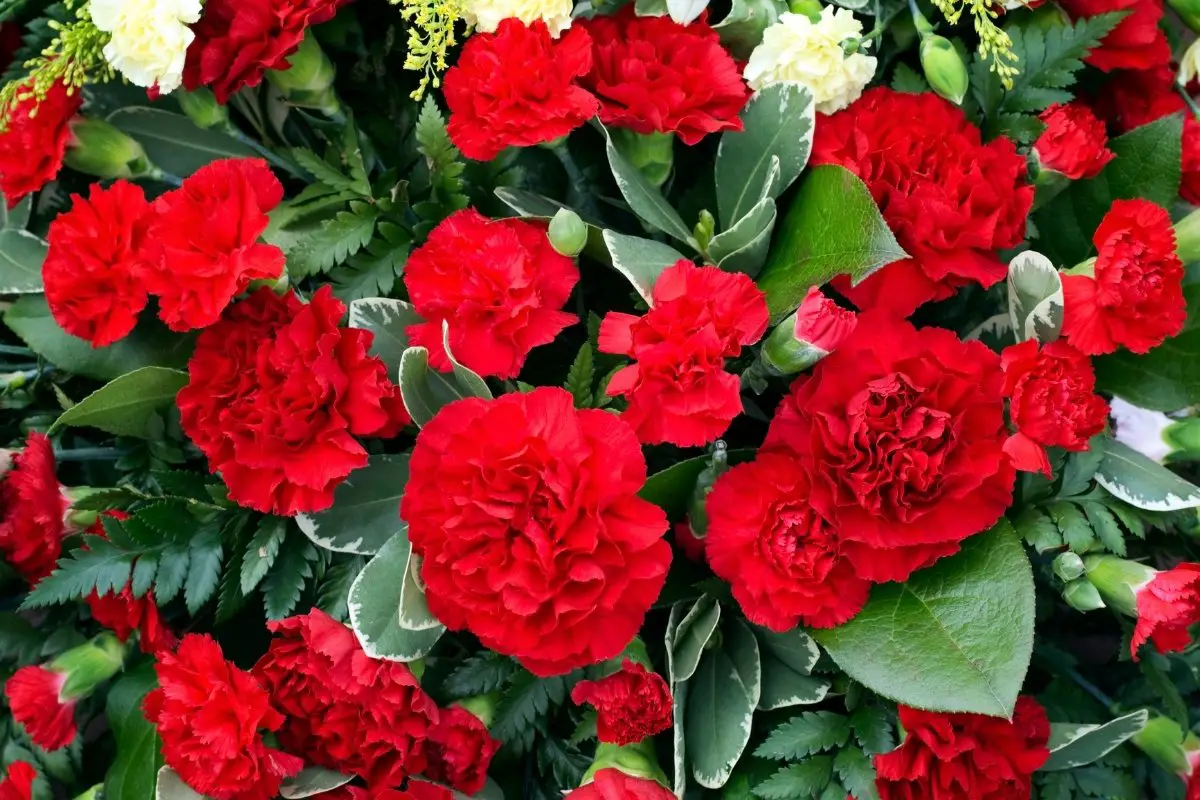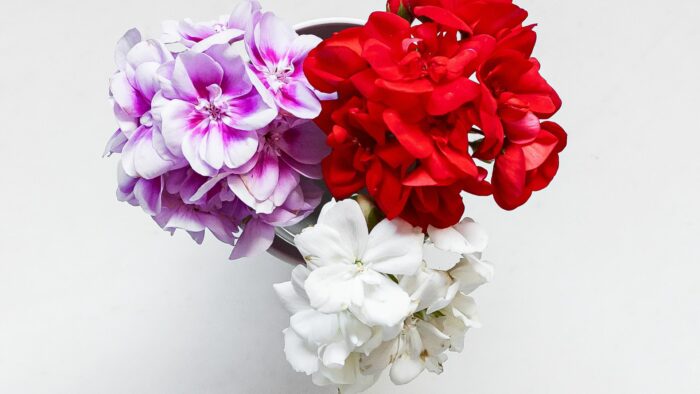Last Updated on March 14, 2023 by Griselda M.
If you long to replicate the Spaniards’ style of filling your garden with colorful blooms, here are the perfect Spanish flower names and types. It’s interesting how flowers are an essential part of Spanish culture, just like paella, bullfights, and flamenco. They use flowers to express feelings, decorate their window sills, or celebrate.
You’ll notice how Spanish flowers are abundant in blooms with mesmerizing colors. The bold, statement colors can’t fail to catch the eye of the passerby. Read on for some Spanish flower names, types, and growing zones to turn your garden into a Mediterranean paradise this spring!
Spanish Flowers: The Beauty of The Mediterranean
Few on our list are native Spanish flowers, while some were brought into the country centuries ago. However, they’re deeply woven into the Spanish culture. Spain has a dry climate with occasional but short rainfalls, especially around the coastal regions.
As a result, it’s not common to see gardens full of green grass due to water shortages, but you can see wildflower beds all around the territory. Spain gets 2700 hours of sun per year, which is the same or less than most cities in the US.

Let’s check out the perfect Spanish flower names and zones.
Different Flower Names in Spanish
1. Red carnations – Claveles rojos
What flower is associated with Spain? It’s the red carnation. It’s the red carnation. Carnations are the national flower of this country, but the red carnation holds a deeper meaning. This luscious flower is connected to religion, fighting for workers’ rights, love, and admiration.
Red carnations can bloom from spring to summer and release an earthy smell. Plant them in early spring, in well-draining soil, and pick a location with at least 4 hours of sunlight a day. They’re hardy and grow in USDA Hardiness zones 4 to 10.
2. Pomegranate flower – Flor de Granada
What is the famous Spanish flower? The bright orange pomegranate flower! Spaniards found beauty in the flowers preceding the juicy fruit and made them their official flower. You can find it mentioned in poetry, art, and even in the name of the city of Granada.
Pomegranate flowers bloom in late spring and self-pollinate. After 3 years, the shrub can produce fruits that ripen in early fall. It requires dry soil and 8 hours of sun every day. The perfect growing zones are 7 to 10.
3. Sunflowers – Girasoles
Ancient Spaniards were convinced that these beautiful flowers were made of gold! Unlike the other Spanish flower names, the Helianthus annuus name comes from the Greek words sun and flower.
Sunflowers symbolize courage, energy, and joy. Plant them in spring when temperatures rise above 50°F. Sunflowers thrive in zones 4 to 9 in a place that receives 6 to 8 hours of daily sun.

4. Gazania flower – Flor de gazania
Gazania flowers, known as the African daisies, acclimated perfectly to the dry Spanish gardens. Named after one of Aristotle’s students, Theodorus Gaza, this flower comes in various fascinating color combinations. Tigers stripe gazania is one of the most common choices.
It grows perfectly when planted after the last spring frost in USDA zones 4 to 10. Provide the Gazanias with 5 to 6 hours of daily sunlight.
5. Lantana (same in Spanish)
Lantana Camara or Spanish flag lantana is a colorful shrub that grows up to 6 feet and features aromatic blooms. The lantana flowers are often classified as invasive and toxic to pets.
They thrive in well-draining acidic soil in USDA zones 8 to 11. Lantanas love the sun, so provide them with a spot that receives 6 to 8 hours of sunlight daily.
6. Bougainvillea – Bugambilia
One of the hardest Spanish flower names to pronounce is the Bougainvillea. You can’t miss it; the Bougainvillea is grown all over Spain. It’s a rapidly growing vine with fuchsia-colored flowers that decorate walls and Spanish house entries.
In the US, the Bougainvillea grows in zones 9 to 11 and needs 6 hours of sun every day.
Nelson Plant Food For All Flowering Vines Bougainvillea Indoor Outdoor Granular Fertilizer 17-7-10
7. Valencia red rose – Rosa roja de Valencia
Roses are among the favorite flowers in Spain, but the Valencia red rose is something special. Commonly grown in the outskirts of Valencia, this striking flower is a symbol of eternal love and passion. It’s the flower that is used in the hair of flamenco dancers.
It grows best in USDA zones 3 to 10 and needs 4 to 6 hours of daily sunlight.
8. Bluebells – Campanilla o Campanula
Bluebells are one of the most aromatic and hardiest plants. They emerge from the ground in early spring as soon as the snow disappears. The Bluebells also come in white and pink colors. The Spanish legends claim that witches hid inside the flowers during the night.
Partial or full shade will work well for these plants. They flourish in USDA zones 3 to 8.
9. Water lily – Lirio acuatico
Don’t be surprised if you find the water lily among the names of the Spanish flowers. The Mediterranean climate is ideal for this flower. You can spot the pink variety in garden fountains or park lakes.
You can even try and grow them in large pots. However, the planting process is specific and not as easy for those with a brown thumb. The best USDA growing zones are 3 to 10. The water lily needs 6 hours of sunlight daily.
Native Spanish Flowers
When it comes to native Spanish flowers, the El Clavel, or red carnation, which is grown in the Spanish Mediterranean, stands out. It is referred to as the la flor de Espana or the flower of Spain when translated into English. However, carnations come in a variety of colors which include red, purple, rose, green, yellow, and pink. Because of their attractive coloring, these beautiful blooms adorn gardens around the world.
Lavender is another flower that is a Mediterranean native. These blooms were thereafter brought to Australia and the Americas by settlers and are now considered naturalized. Additionally, bougainvillea plants are commonly associated with Spain as it is native to the country. They display beautiful purple and bright pink blooms when grown in the right conditions. Keep in mind that bougainvillea plants thrive in well-drained soil with full sun exposure.
Spanish Botanical Name
A Spanish botanical name refers to a plant’s scientific name in the language. This means that these plants also have an English name which you may be more familiar with. For example, the Spanish moss, which is a fibrous, epiphytic perrenial that is rootless, is known as Tillandsia usneoides in Spanish. This plant belongs to the bromeliad family, which is renowned for its growth habit. Let’s take a look at other botanical names that are in Spanish.
Botanical Spanish names:
- Garcinia Indica – the Spanish botanical name for kokum.
- Mentha Piperita – is the botanical name of the peppermint plant.
- Avena – is the botanical name for Oats.
- La Maya – is the botanical name for Daisy.
- La Gardenia – is the botanical name for Gardenia.
- El Tulipan – is the botanical name for Tulip.
- La Orquidea – is the botanical name for Orchid.
- La Margarita – is the botanical name for Marigold.
- La Azalea – is the botanical name for Azalea.
- El Girasol – is the botanical name for Sunflower.
- La Amapola – is the botanical name for Poppy.
- El Narciso – is the botanical name for Daffodil.
- La Violeta – is the botanical name for Violet.
- La Petunia – is the botanical name for Petunia.
Spanish Male Flower Names
Ever thought about Spanish male flower names? I guess most people haven’t, as flower names have a close reference to females. However, male flower names in Spanish are actually quite sought after. While some of you may know and understand the meaning of your name, others do not. This is why most people are intrigued when they find out the origins of their name. Have a quick look at the Spanish boy names listed below to understand what rare gems they actually are.
Spanish boy flower names:
- Cresento or Crisento – means the gold flower.
- Aciano – means the blue bottle flower.
- Clem – means merciful.
- Florence – means blooming.
- Florencio – means in bloom.
- Peregrine – means traveler or wanderer.
- Poppy – means from the flower.
- Sage – means healing herb.
Spanish Flower Girl Names
Spanish flower girl names are beautiful. One of the most common Spanish names for girls is Rosa, which means rose or flower. If you look at Latin America and Spain, you will find that the name Rosa is commonly paired with a second name. These include names like Rosa Maria and extended names like Rosana or Rosalina. Here’s a list of flower girl names and the blooms they represent.
Spanish girl names for flowers:
- Begona – which is the begonia flower.
- Amaranta – which is the Amaryllis.
- Amapola – which is Poppy.
- Jacinta – which is Hyacinth.
- Girasol – which is the Sunflower.
- Narcissa – which is the Narcissus flower.
- Margarita – which is the Marguerite.
- Peonia – which is the Peony.
- Yolanda – which is the Violet.
- Violeta – which is the Violet wildflower.
Final Say: Spanish Flowers Names
Bring a slight Mediterranean touch to your garden this season with the fragrant and striking Spanish flowers. If you’re indecisive, use our list of Spanish flower names to see which ones suit your zone. There’s no simple answer to what are the Spanish flowers called. There are hundreds of flowers, and we’ve picked those that hold the greatest meaning to Spain and its people.
Spaniards have a deep connection to the meaning of flowers, so if you decide to gift a plant to someone, make sure you know what it implies. Let us know what’s your favorite Spanish flower and if you already own one!
PS – Here is a related post that may be of interest. Every State has a flower, and one of my favorites is the New Hampshire state flower.
FAQs
What are the Spanish flowers called?
The most common Spanish flowers are the pomegranate flower, the red Carnation, Valencia red rose, Bougainvillea, Gazania, Lantana, Water Lily, Poppies, and Bluebells. They're grown all over Spain and thrive in dry but sunny conditions.
What is the famous Spanish flower?
The red carnation is Spain's national flower. It's associated with love, appreciation, and devotion. The red carnation is an inseparable part of Spanish culture. It's a mother's day gift, but it's also given to matadors, flamenco dancers, and people you value.
What flower is associated with Spain?
The pomegranate flower is associated with Spain because it's their official flower. It is represented in literature, art, and Granada's coat of arms. After all, the city got the name after the flower!
Mary is a passionate gardener who loves spending her days getting her hands dirty and nurturing her plants. She‘s an avid reader of gardening magazines and is always looking for new ways to make her garden thrive. When not outside tending to her plants, Mary can be found inside reading up on the latest gardening trends, comparing notes with fellow gardeners, and finding the perfect pottery planter for her next planting project.



